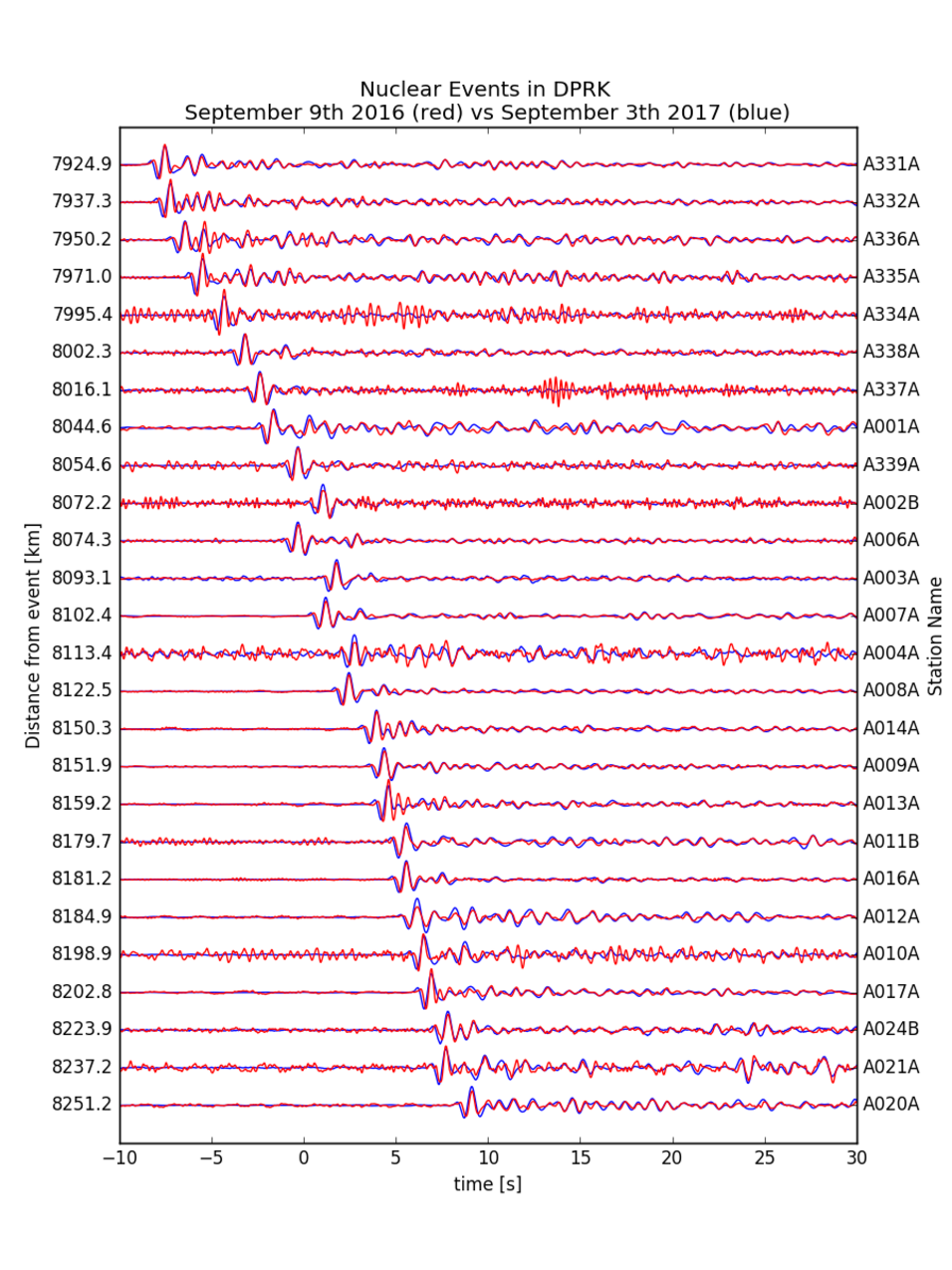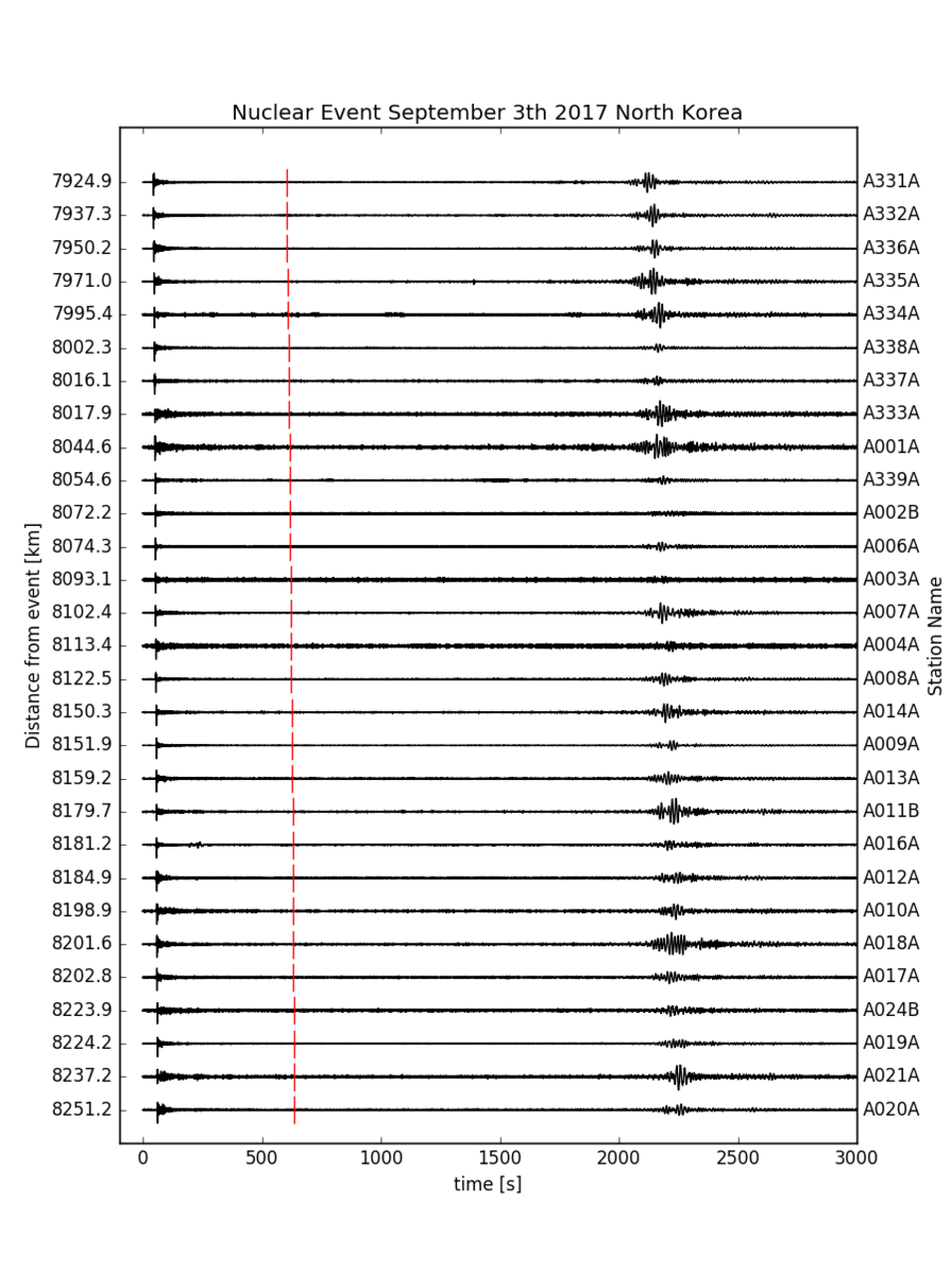As in the nuclear weapons tests in January and September 2016, the seismic waves caused by the explosion were also measured by the temporary AlpArray stations of the University of Vienna situated in Austria and Slovakia around 8000 km away from the test site. The comparison of the waves from September 2016 to September 2017 shows a great similarity.
Figure 1 shows the pressure waves of the two tests in comparison. However, the waveforms of the test of September 2016 were increased by a factor of 9.0, which indicates a significantly greater energy release during this year's test. A seismic magnitude of 6.3 was calculated for this year's test [1], while the test of September 2016 had a magnitude of 5.3 [2].
The explosive nature of the seismic source is also proven by the absence of shear waves (and only weak surface waves). The calculated theoretical arrival times of the shear waves are marked red in Figure 2, approx. 500s after the pressure waves. The later arriving signals are generated by surface waves which arrive much later due to a longer traveling distance along the Earth's surface.
[1] geofon.gfz-potsdam.de/eqinfo/event.php
[2] geofon.gfz-potsdam.de/eqinfo/event.php


